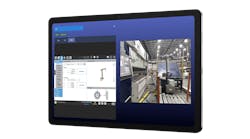Dave Perkon is technical editor for Control Design. He has engineered and managed automation projects for Fortune500 companies in the medical, automotive, semiconductor, defense and solar industries.
There are many experienced and productive control designers and programmers in industry today. The companies they work for know the value of a good controls engineer. Unfortunately, there are many inexperienced engineers, such as recent college graduates or maybe the seasoned engineer who likes to hide in the corner and just do what's necessary. Some are excited to learn, and others not so much. The point is, engineers come in all types—some great, some good and some bad, as in life. At no point is this less obvious than in a job interview or more obvious than while working on a project.
As an engineer and manager, I've interviewed many controls engineers, electrical designers, programmers and CAD operators through out my 27 years in industry to design and program automated equipment. Along with all the typical interview questions, I had what I consider a basic interview task: draw a start/stop circuit. Unfortunately, only about 20% of the "experienced" control-design and programming applicants could do it. Clearly, industrial, hands-on experience is all relative, and each interview was quite the learning experience for both me and interviewee.
During the interview I simply asked, in writing, that the applicant draw a start/stop circuit ladder diagram using the following hardware: a normally open pushbutton, a normally closed pushbutton, a pilot light and a DPDT relay. I also noted the requirement was to turn on the green pilot light when the momentary start button was pressed and turn off the light when the momentary stop button was pressed. I also asked the applicant to add wire numbers, device designators and relay contact cross references.
If you want to see the circuit, let me know as it was a great test. It clearly showed experience with control design and the applicant’s attention to detail—just not many applicants showed much of either. The experienced designer forgot the wire numbers or cross references and the inexperienced designer used the eraser quite a bit, along with many other issues.
Also read: How the industry can leverage new skill sets of Generation Y
Perhaps I'm asking too much and shouldn't expect an experienced control designer or recent EE graduate to draw a hardwired start/stop circuit. If they could not draw a simple hardwired start/stop circuit, I didn't think they could program one either. However, many of the applicants, who couldn't draw it, stated on their resumes that they were experienced PLC programmers, as well. This highlighted concerns about the applicant’s ability to program a PLC step sequence.
In many cases they didn't make the connection that they were the same logical circuit—one was just hardwired and the other programmed. If they didn't know the answer, I showed them how to do it with the thought that I could develop the engineer as needed, if the candidate was interested in learning. It's clear that even with a four-year degree in engineering, the interviewees didn't have any practical experience. Examples of the problems this causes are endless, so engineering talent must be developed.
"Developing and training an engineer is a good thing although the results will vary," notes Otto Fest, president at Otek. Fest thinks the real technical education starts after graduation. "College graduates are expecting $60,000 to $100,000 per year but are not worth that without experience. Industry needs to invest two or three years’ time and effort to teach them what schools don't. And then, once trained in this hands-on work, the engineer may leave for greener pastures."
Fest does offer up what I think is an excellent solution—mandatory internships. "It works great for doctors, and it works great for German college students,” says Fest. “Maybe we can learn from that. From my experience, we need to improve the technical education of graduates. Although college is a great start, it is not enough, as real life doesn't happen in college."
Colleges in Germany, arguably the world’s top technical source, have mandatory internships. In the United States, college has more to do with the “college experience,” but in Germany it's more about the classroom and hands-on experience. Forget the dorm room, student union and the parties. To graduate in Germany, you must read, write, understand and express yourself in three languages and have three or more six-month internships in foreign countries related to your major. That sounds like an excellent way to get the technical education needed for industry.
If you don't agree, I'm good with that. However, consider the mechanical engineer who graduated at the top of his class from a leading engineering university but had no practical, hands-on experience. This intelligent engineer climbed a cooling tower under construction, in the hot sun, and spent several hours removing bolts, turning over a split washer and re-tightening the bolts because he was told the split lock washers, located under the bolts we marked, were upside down. Yes, we probably shouldn't have done this on-the-job training, but we did stop him after a few hours of hard work and he now knows what a split lock washer is, in addition to the thermal dynamics he aced in college.
Nothing beats experience. If you are an engineer and don't have the experience, go get it. Wire some control panels and design some electrical schematics. It also pays to find a mentor to help you get there.
This brings me to a future article I’ll be writing on mentoring and the mentored. A mentor benefits both young and old. As a young engineer, working with a mentor is a great opportunity to improve productivity and the results of your next control-design project. I've done both, but I would love to hear some of your comments on that subject.
None of these comments are about politics. Let’s stay away from that; they are about control design for machine builders and include a few of the many ways to "re-manufacture America." I'd like to help re-manufacture America and hope industry does, also. If you cannot get it built in the United States, where are you going to go? My least favorite, but a popular option for others, is to go to China. They happen to be copying, which they are good at, the German educational requirements and flooding the world with technical students. Seems like the smart thing to do.
Do you know how to start/stop?
Main image courtesy of phasinphoto at FreeDigitalPhotos.net






